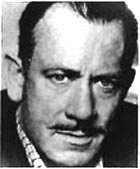

 Wikipedia Sitemap |
|
|  Useful Links 1 Useful Links 2 |
● John Steinbeck, 1902-1968 - Author of The Grapes of Wrath
● Analysis, Critique, Reviews, and General Resources on The Grapes of Wrath
● Study Guides on The Grapes of Wrath
● Lesson Plans and Webquests on The Grapes of Wrath
● Movies, Videos, Images, Music Sites on The Grapes of Wrath
● Dust Bowl of the 1930s
● Miscellaneous Topics on The Grapes of Wrath
● Links to other The Grapes of Wrath Web Sites
Note: Some topics may be overlapped.
 |
 |
 |
 |
A Bard for the Powerless: The Steinbeck Centennial by Lisa Rogers, Humanities, Nov./Dec. 2001, Vol. 22, No. 6.
Biographical Sketch of John Steinbeck from John Steinbeck Collection - Steinbeck, John, 1902-1968, Collection, 1926-1977 - Harry Ransom Humanities Research Center, University of Texas, Austin.
Early Twentieth Century - John Steinbeck (1902-1968). PAL - Perspectives in American Literature - A Research and Reference Guide. External links include: The Steinbeck House - John Steinbeck's Birthplace and Boyhood Home. Internal links include: Primary Works, Selected Bibliography, The Grapes of Wrath (1939), and Study Questions.
'Grapes of Wrath' and the Politics of Book Burning. Posted by Lynn Neary, an NPR arts correspondent, Sept. 30, 2008. " ... people give a lot of reasons for wanting to ban books, says Judith Krug of the ALA (American Library Association), but most often the bannings are about fear. 'They're not afraid of the book; they're afraid of the ideas,' says Krug. 'The materials that are challenged and banned say something about the human condition.'
John Steinbeck's 1939 classic, The Grapes of Wrath, which chronicles an Oklahoma family's hapless migration westward, is a perfect example. The book was an immediate best-seller around the country, but it was also banned and burned in a number of places, including Kern County, Calif. - the endpoint of the Joad family's migration."
Grapes Of Wrath' Is 75, But Its Depictions Of Poverty Are Timeless. Posted by Lynn Neary, an NPR arts correspondent, Apr. 14, 2014. "Seventy-five years later, The Grapes of Wrath still isn't universally loved - it remains one of the most frequently banned books in this country. But it's also a powerful reminder of a past that no one really wants to see repeated."
John Ernst Steinbeck (1902-1968). Biography of Steinbeck from Oprah's Book Club. "What makes John Steinbeck so fascinating? His quirky personality? His unique world view? ... A shy man. A class act. A visionary. An experimental writer." Listen to Steinbeck Biography from NPR. Life and Times of John Steinbeck - Timeline. Steinbeck Goes to the Movies.
John Ernst Steinbeck (1902-1968). Birth: Feb. 27, 1902. Death: Dec. 20, 1968. Author. "He was a prolific writer who wrote scores of novels, short stories, anthologies and covered World War II as a war correspondent for the ?New York Tribune?. His frequent topic was the plight of the misfits, homeless and the hopeless." From Find a Grave Memorial, with photos.
John Steinbeck. Biography from eNotes with photo.
John Steinbeck (1902-1968). New site to include: A brief chronology of Steinbeck's life, Chronological list of Steinbeck's books, Places associated with Steinbeck's writing, Steinbeck's Monterey Bay Area homes.
John Steinbeck and Pacific Grove.
John Steinbeck Biography from CliffsNotes. Family and Education, Early Work, Career Highlights. "John Steinbeck was a man of experience first and words second. He lived passionately and observed both shrewdly and humanely, focusing on human struggles with the forces of nature around him and the passions within him ..."
John Steinbeck Biography from the National Steinbeck Center in Salinas, California, the birthplace of Nobel Prize-winning author John Steinbeck. Early Years: Salinas to Stanford: 1902-1925. "John Steinbeck was born on February 27, 1902 in Salinas, California, the third child of Olive Hamilton, former school teacher, and John Ernst Steinbeck, manager at Sperry Flour mill." Apprentice years: Cup of Gold (1929) through The Red Pony (1933-34). Success: Tortilla Flat (1935) through The Grapes of Wrath (1939). War Years: 1943-1945. The Post-war years: 1945-1951. The 1950s and 1960s. "Throughout the mid-Sixties, Steinbeck's health continued to decline. He suffered increasingly frequent episodes resembling mini-strokes, and eventually died at his home in New York City on December 20, 1968."
John Steinbeck: ESL Resources. Links to: Biography, Grade Saver, Monterey County Historical Society, National Steinbeck Center, Nobel Prize, Pacific Grove, Penguin Dossier + Notes, Quotations, Steinbeck Country, The Grapes of Wrath: Classic Notes, Penguin, Research Guide, Resource Page, Résumé des chapitres, School Discovery, and more.
John Steinbeck (February 27, 1902 - December 20, 1968): American writer. ESL Resources.
John Steinbeck FBI Files. View an actual Memorandum dated July 20, 1965: "Although he has never been investigated by the FBI, he wrote Attorney General Biddle in May, 1942, as follows: 'Do you suppose you could ask Edgar's boys to stop stepping on my heels? They think I am an enemy alien. It is getting tiresome.'"
John Steinbeck - Biography. Brief biography of John Steinbeck, Winner of the Nobel Prize in Literature 1962. Site includes Steinbeck's Presentation Speech, text of his Banquet Speech, and Other Resources.
John Steinbeck Collections from Stanford University Libraries.
John Steinbeck Timeline and Major Works from A Noise Within.
● John Steinbeck Timeline by Brian Kannard, Steinbeck: Citizen Spy.
● The Life of John Steinbeck Timeline by
hayesgav, Timetoast.
● John Steinbeck timeline by Trista Wayne, Prezi.com, 23 March 2016.
● John Steinbeck: A Brief Chronology from Monterey County Historical Society.
● John Steinbeck Timeline from John Steinbeck Museum.
John Steinbeck: The Centennial by Clay Smith, Austin Chronicle. "... after The Grapes of Wrath was published, the governor of Oklahoma denounced it as unrealistic. A promotional article about Steinbeck from the Thirties loudly proclaims that 'America was proud of its front porch until John Steinbeck showed the backyard' ..."
John Steinbeck: The Grapes of Wrath. Brief biography of Steinbeck and brief Summary of The Grapes of Wrath from AmericanWriters.org. A companion site for C-SPAN's special television series, created by Cable, offered as a Public Service. American Writers II: The 20th Century.
John Steinbeck's Pacific Grove Driving Tour - in PDF. This is a self-guided driving tour of John Steinbeck?s Pacific Grove. It features local sites relating to the lives and work of John Steinbeck and Edward F. Ricketts.
Last Chance to Read 'Grapes of Wrath' Before It Turns 75 by Nicole Cohen, blog posted on Feb. 17, 2014 on Monkey See.
Steinbeck Country APP. SALINAS, California. June 5, 2013 - A free version of Steinbeck Country & Beyond: Salinas to Stockholm is now available from the iTunes App Store. Developed in association with the National Steinbeck Center, Steinbeck Country & Beyond is a mobile travel guide app to the people and places in Monterey County and beyond that informed the life and work of Nobel Prize-winning writer John Steinbeck."
"Steinbeck Country & Beyond comprises nearly 200 entries describing the writer’s books and articles and the people, places, and ideas that inspired them. Each entry includes photographs, maps, and links to sources of further information as well as resources for students and scholars.">
● Mobile guide to the people and places that informed the writer’s life and work
● Free version available for the iPad & iPhone.
The Big Read: The Grapes of Wrath - Preface from the National Endowment for the Arts. "John Steinbeck's The Grapes of Wrath is not merely a great American novel. It is also a significant event in our national history. Capturing the plight of millions of Americans whose lives had been crushed by the Dust Bowl and the Great Depression, Steinbeck awakened the nation's comprehension and compassion."
● The Grapes of Wrath Reader's Guide.
● The Grapes of Wrath Teacher's Guide.
● The Grapes of Wrath Radio Show - Listen! (28:44 min.)
Bonding with the Joads: Attaining Closure in The Grapes of Wrath an example of literary criticism by Jeri Walker.
Book-a-Minute Classics: The Grapes of Wrath. An ultra-condensed humorous synopsis. Summarizes the entire novel in one succinct sentence.
Critical Essays: Use of Literary Devices in the Intercalary Chapters of The Grapes of Wrath and Philosophical Influences on Steinbeck's Social Theory.
The Dust Bowl. America in the 1930s from EyeWitness to History. A brief summary. The Dust Bowl, 1936 - A very short video on "Wind and dust ravage the plains of Oklahoma."
The Dust Bowl: A Film by Ken Burns from PBS. "The Dust Bowl chronicles the worst man-made ecological disaster in American history, in which the frenzied wheat boom of the 'Great Plow-Up,' followed by a decade-long drought during the 1930s nearly swept away the breadbasket of the nation. Vivid interviews with twenty-six survivors of those hard times, combined with dramatic photographs and seldom seen movie footage, bring to life stories of incredible human suffering and equally incredible human perseverance."
Forbidden Fruit: The Banning of The Grapes of Wrath in the Kern County by Marci Lingo. Levan Humanities Review, Volume 3, Issue 1.
The Grapes of Wrath. Biography of John Steinbeck, Excerpts, Influences, Migrant Workers, Effects of John Steinbeck's book The Grapes of Wrath on: Readers, Kern County, Critics, The Welfare of America, Other Authors, The Literary World (Through Social Commentary), and "The Common Man". This web site is the result of a class-wide project assigned to the girls of Ms. Delaney's English III AP students.
Grapes of Wrath by John Steinbeck. Reviews of Grapes of Wrath from Barnes & Noble.
Kern County and the First Amendment 1939. "21 Oct 2009 ? The same day, on a vote of four to one (Supervisor Ralph Lavin dissenting), the Kern County. Board of Supervisors banned Grapes of Wrath . . ."
May 6, 1940. On this day, John Steinbeck wins a Pulitzer for The Grapes of Wrath.
NPR Books: The Grapes of Wrath.
'Obscene in the Extreme' by Rick Wartzman. John Steinbeck's classic about the 1930s Dust Bowl drew its share of controversy, Sunday, August 31, 2008, by Glenn C. Altschuler, Cornell University. "Published in April 1939, 'The Grapes of Wrath' was an experiment in Depression-era 'documentary fiction.' Author John Steinbeck alternated chapters on the Dust Bowl, the migration of tin lizzies and the plowing under of an orange crop in California, with a narrative about the experiences of the Joad family on the road and in Central California. In a year, 429,000 hardcover copies of the novel were sold. Growers in California and their political allies denounced the novel as 'a damnable lie, a black infernal creation of a twisted, distorted mind.'"
Steinbeck's Myth of the Okies by Keith Windschuttle. From The New Criterion Vol. 20, No. 10, June 2002. In this article, Windschuttle argues that the story in The Grapes of Wrath has little connection to the history of the Great Depression or the experience of the great majority of the Okies.
Surviving the Dust Bowl from PBS, WGBH American Experience.
● The Drought.
● Timeline: Surviving the Dust Bowl, 1931-1939.
● Black Sunday: April 14, 1935.
● Photo Gallery: An Eyewitness Account.
● Mass Exodus from the Plains. "'The land just blew away; we had to go somewhere.' ~ Kansas preacher, June, 1936."
● Teacher's Resources: Teacher's Guide. Suggestions for the Classroom.
ClassicNote on The Grapes of Wrath. Contents: About the Author John Steinbeck, Short Summary of the Novel, Full Summary and Analysis, Character List, Summary and Analysis of Chapters 1-30, plus Essays: Contrasting the Movie and Novel Form of the Grapes of Wrath, Four Pages of Fear, Hostility, and Exploitation, and All in the Family in The Grapes of Wrath.
CliffsNotes: The Grapes of Wrath by John Steinbeck. The Grapes of Wrath at a Glance. About the Grapes of Wrath: Introduction, Historical Background, Critical Reception of The Grapes of Wrath, The Structure of The Grapes of Wrath, Steinbeck's Social Philosophy.
● Book Summary
● Character List
● Summary and Analysis - Chapters 1 - 30
● Character Analysis: Tom Joad
● Character Analysis: Ma Joad
● Character Analysis: Jim Casy
● Character Analysis: Rose of Sharon Joad
● Character Analysis: Pa Joad
● Character Analysis: Other Characters - Al Joad, Granpa Joad, Granma Joad, Uncle John Joad, Ruthie Joad, Winfield Joad, Noah Joad, Ivy and Sarah (Sairy) Wilson, The Wainwrights
● Character Map
● Study Help: Quiz
● Full Glossary for The Grapes of Wrath
● Essay Questions
● Practice Projects.
The Grapes of Wrath by John Steinbeck from Shmoop. Analysis, summary, chapter-by-chapter, themes, characters, notes, study questions, literature.
The Grapes of Wrath by Ed Stephan of Western Washington University, Bellingham WA. Site provides excellent resources for the serious scholar. Includes detailed analysis of the novel, complete with chapter by chapter plot summary and descriptions of major characters. You will also find an illustration of the Dustjacket from the First Edition, Movie Poster (1940), Map showing places mentioned in Chapter 12 of The Grapes of Wrath, another colorful map showing the setting for Chapters 18-30, Notes and Links to the Bible - Revelation 14:19, Migrant Labor Camp Photographs, 1935-6, 1940 Grapes of Wrath movie directed by John Ford, Smithsonian's Dust Bowl exhibit and Dustbowl Storm video, Historic Route 66, and more.
Grapes of Wrath eNotes. Contents: Grapes of Wrath: Introduction, John Steinbeck Biography, List of Characters, Historical Background, Chapter-by-Chapter Summary, Discussion and Analysis (Chapter-by-Chapter Critical Commentary), Characters Discussed, Complete Critical Essays on Various Topics, Chapter Quizzes (Chapter-by-Chapter Questions and Answers), Suggested Essay Topics, and Sample Essay Outlines.
The Grapes of Wrath Vocabulary. Vocabulary Lists. John Steinbeck's "Grapes of Wrath" Chapters 1-8, Chapters 9-15, Chapters 16-19, Chapters 20-24, Chapters 25-30.
PinkMonkey Literature Notes on The Grapes of Wrath edited by Diane Sauder. An excellent source for an organized and structured study of the novel. Contents: Key Literary Elements covering Setting, Characters, Conflict, Plot, Themes, Mood, Background Information, and Literary/Historical Information. Chapter Summaries with Notes - Chapters 1-30, Overall Analyses of Characters, Plot, and Themes, plus Study Questions, Bibliography, as well as Comment on the study of Literature.
SparkNotes: The Grapes of Wrath by John Steinbeck. Contents: Context, Plot Overview, Characters, Character Analysis, Themes, Chapters 1 - 30, Quotations, Facts, Study Questions and Essay Topics, Quiz, and Further Reading.
Creating Dramatic Monologues from "The Grapes of Wrath" from DiscoverySchool.com. Objectives of lesson plans designed for Grades 9-12 are: Students will understand the universal nature of Steinbeck's characters' struggles and some of the complex forces affecting their lives; and the value of primary source material in presenting an authentic picture of an given period in history. Detailed lesson plans include procedures, adaptions, discussions questions, plus other valuable resources e.g. video clip, vocabulary where you can hear the words (e.g. arable, harrowing, migrant, viracity, vigilante) pronounced and used in a sentence, links to relevant sites, and more.
The Grapes of Wrath - Scrapbooks and Artifacts: Ethnographic Field Studies in Fiction. Teacher Lesson Plan by Linda and David Lackey. Recommended Grade Level: 11-12. Teacher's Guide: Introduction to American Memory, Lesson 1: Ethnography, Lesson 2: Photo Analysis, Lesson 3: Oral History, Lesson 4: Material Artifacts and Textual Support, Lesson 5: Museum Exhibition.
Learning Guide to: The Grapes of Wrath. From Teach with Movies. States the educational values and benefits for selecting this film: "This film is an introduction to the Great Depression. It explores the stress of hard times on a family and the oppression of migrant workers by large landowners." Designed for students Grade 6 and up. Provides clear and concise background information on the historical context of the 1940 movie. Includes discussion questions, words and phrases, ethical emphasis, and links to other lesson plans.
Life in the 1930s: The Great Depression. An Internet WebQuest on The Great Depression by Paige G. Elliott, Fuquay-Varina High School, Fuquay-Varina, NC. "It is my [Webquest creator's] hope that you will consider others' perceptions in addition to your own. After all, 'perception is reality.'"
Woody Guthrie and The Grapes of Wrath. YouTube video, 2:32 min. Published on Oct 18, 2012. Video to show students while reading "Out of the Dust" by Karen Hesse.
Woody Guthrie Dust Bowl Ballads. Background, Song List includes lyrics: Blowin' Down This Old Dusty Road (1930s), (If You Ain't Got the) Do Re Mi (1937), Dust Bowl Blues (1930s), Dust Bowl Refugee(s) (1938), Dust Can't Kill Me (1938), Dust Pneumonia Blues (1938), Dusty Old Dust (So Long, It's Been Good to Know Yuh) (1935), The Great Dust Sotrm (dust Storm Disaster) (1930s), I Ain't Got No Home (1938), Pretty Boy Floyd (Mar 1939), Talking Dust Bowl (1930s), Tom Joad (1940), and Vigilante Man (1930s).
An American Classic: John Steinbeck's The Grapes of Wrath - First Edition. Intact with original beige cloth, original dust jacket. New York: Viking Press, (1939). $3000.
Brother can you spare a dime? Tom Waits. YouTube video, 3:47 min. "Brother, Can You Spare a Dime?", also sung as "Buddy, Can You Spare a Dime?", was one of the best-known American songs of the Great Depression. Written in 1931 by lyricist E.Y. "Yip" Harburg and composer Jay Gorney.
Black Blizzard. Dust Bowl Video from History.com, 2:56.
The Dust Bowl and the Great Depression. YouTube video, 3:29 min.
The Dust Bowl Photo Gallery from History.com.
Dust Storms Strike America. Dust Bowl Video from History.com, 2:48 min.
Google Images of The Grapes of Wrath.
The Grapes of Wrath from Top 100 Movie Lists. Includes a poster, photos, sound bites on "I'll be all around in the dark" in Henry Fonda's voice, More Memorable quotes, plus a short Review by Aaron Caldwell.
The Grapes of Wrath (1940) from Internet Movie Database (IMDB). Film directed by John Ford. Includes a Mini Biography of John Steinbeck, Photo gallery for The Grapes of Wrath (1940) starring Henry Fonda as Tom Joad, Plot Summary, Memorable Quotes from The Grapes of Wrath (1940), Amazon.com Reviews, Review by Jude Wanniski, Review by Brian Koller.
Grapes of Wrath - Dust Bowl . Images from the Library of Congress. YouTube video, 2:33 min.
The Grapes of Wrath: Film, Film vs Book, Route 66. Site gives some background information about the 1940 John Ford film of The Grapes of Wrath, and mentions that Hollywood producer Daryl F. Zanuck paid Steinbeck $75,000 for the film rights to his novel within a month of its publication in March 1939. It discusses the differences between the film and the novel, and includes a history of Route 66. It points out that it was this novel "The Grapes of Wrath" that "served to immortalize Route 66 in the American consciousness. Hundreds of thousands of people migrated to California to escape the despair of the Dust Bowl, thus Route 66 symbolized the 'road to opportunity'". Site originates from the University of Vienna, Austria, as part of a course taught by a professor of English and American Studies. Course title: Roads in/of American Culture as Avenues of Cultural Studies.
The Grapes of Wrath (1940). Film site. Review by Tom Dirks.
The Grapes of Wrath - ReThink Review. Jonathan Kim rethinks. YouTube video, 3:47 min.
The Great Dust Storms - a Ken Burns style video. YouTube video, 1:10 min.
"Migrant Mother" Photographs in the Farm by Dorothea Lange, made in February or March of 1f936 in Nipomo, California.
Trampling Out the Vintage: Reflections on John Steinbeck and "The Grapes of Wrath". YouTube video. 29:20 min. Uploaded on Jan 25, 2008. "The Grapes of Wrath is arguably the most celebrated work of John Steinbeck's illustrious career, and both the play and film based on the novel are classics in their own right. Through archival material and interviews with noted Steinbeck scholars, Trampling Out the Vintage explores the genesis and history of Steinbeck's novel, and examines its perennial hold on the American imagination."
U.S. Dust Bowl of 1930's YouTube video, 2:54 min.
Dust Bowl: Men, Dirt and Depression by Mathew Paul Bonnifield.
About the Dust Bowl. Photos, map, and timeline. See also The Great Depression.
Droughts Like 1930s Dust Bowl May Have Been Unexceptional In Prehistoric Times, New Study Suggests from ScienceDaily.
The Dust Bowl During the Great Depression and World War II, 1929-1945 from The Learning Page, Library of Congress. See also
● The Dust Bowl Photograph Collage
● The Dust Bowl - I'd Rather Not Be on Relief - Song Lyrics
● The Dust Bowl - Life in the Camps - Photograph Collage
● The Dust Bowl - On the Road - Photograph Collage
● The Dust Bowl - Roll Out the Pickets - Song Lyrics
● The Dust Bowl - Songs of the Okies - Radio Script
● The Dust Bowl - Trampling Out the Vintage by Charles L. Todd.
The Dust Bowl of Oklahoma. America's Story from America's Library.
Kansas in the Dust Bowl: We Aim to Stay by Susan Chaffin, from Voices: The Kansas Collection Online Magazine.
Life in the 1930s: The Great Depression. An Internet WebQuest on The Great Depression.
Living with Dust by Lynn Nelson, from Voices: The Kansas Collection Online Magazine.
Mass Exodus from the Plains - Surviving the Dust Bowl. From WGBH American Experience - TV's Most Watched Series.
Plains Drought Cycle Has Long History, Ominous Future by Brian Handwerk, National Geographic News. "Many climatologists believe that devastating droughts like the 1930s Dust Bowl are not abnormal when viewed in larger historic context."
Surviving the Dust Bowl - The American Experience. The 60-minute film "Surviving the Dust Bowl" may be ordered from PBS Home Video. Description: "A moving and poignant look at one of the damaging scourges to blight the United States. When the rains suddenly ceased in the summer of 1931, a period of black blizzards brought financial and emotional ruin to thousands of families in the Southern Plains. The dust bowl was America's worst ecological disaster. Featuring interviews with those who survived its terrible toll, Surviving the Dust Bowl is an emotional tribute to those who endured its traumatic consequences." Site includes Special Features, Timeline of Dust Bowl, Map, Links to People & Events, and a Teacher's Guide.
Voices from the Dust Bowl. From the Charles L. Todd and Robert Sonkin Migrant Worker Collection is an online presentation of the everyday life of residents of migrant work camps in central California in 1940 and 1941. Collection consists of audio recordings, photographs, manuscript materials, and publications. View the text of 113 Songs, Listen to recordings of these songs, Browse 363 Audio Titles, 23 Photographs, and Performers/Interviewees from A-Z.
The Grapes of Wrath Television Tropes & Idoms.
History of the Weedpatch Camp by Margaret Lutz, Oct. 20, 1999. "Between 1935 and 1940, over one million people left their homes in Oklahoma, Texas, Arkansas and Missouri to escape the wind, dust, and drought and set out for California on what was referred to then as the "Mother road", route 66. They left their homes to find a better life for their families in California, where they heard there was a lot of work to be found picking crops, and where no one ever went hungry."
Weedpatch Camp from Wikipedia. "Weedpatch Camp (also known as the Arvin Federal Government Camp and the Sunset Labor Camp) was built by the Farm Security Administration (FSA) south of Bakersfield, California in 1936 to house migrant workers during the Great Depression. Several historic buildings at the camp were placed on the National Register of Historic Places (NRHP) on January 22, 1996.
Weedpatch Camp has its origins in the migrations during the drought that caused the Dust Bowl in the mid-1930s. Oklahoma was especially hard hit by the drought and many of the farmers there left. They migrated to California where they moved from farm to farm looking for work as farm laborers. "
Surviving the Dust Bowl from PBS, WBGH American Experience.
● The Drought.
● Timeline: Surviving the Dust Bowl, 1931-1939.
● Black Sunday: April 14, 1935.
● Photo Gallery: An Eyewitness Account.
● Mass Exodus from the Plains. "'The land just blew away; we had to go somewhere.' ~ Kansas preacher, June, 1936."
● Teacher's Resources: Teacher's Guide. Suggestions for the Classroom.
John Steinbeck, The Grapes of Wrath @Web English Teacher.